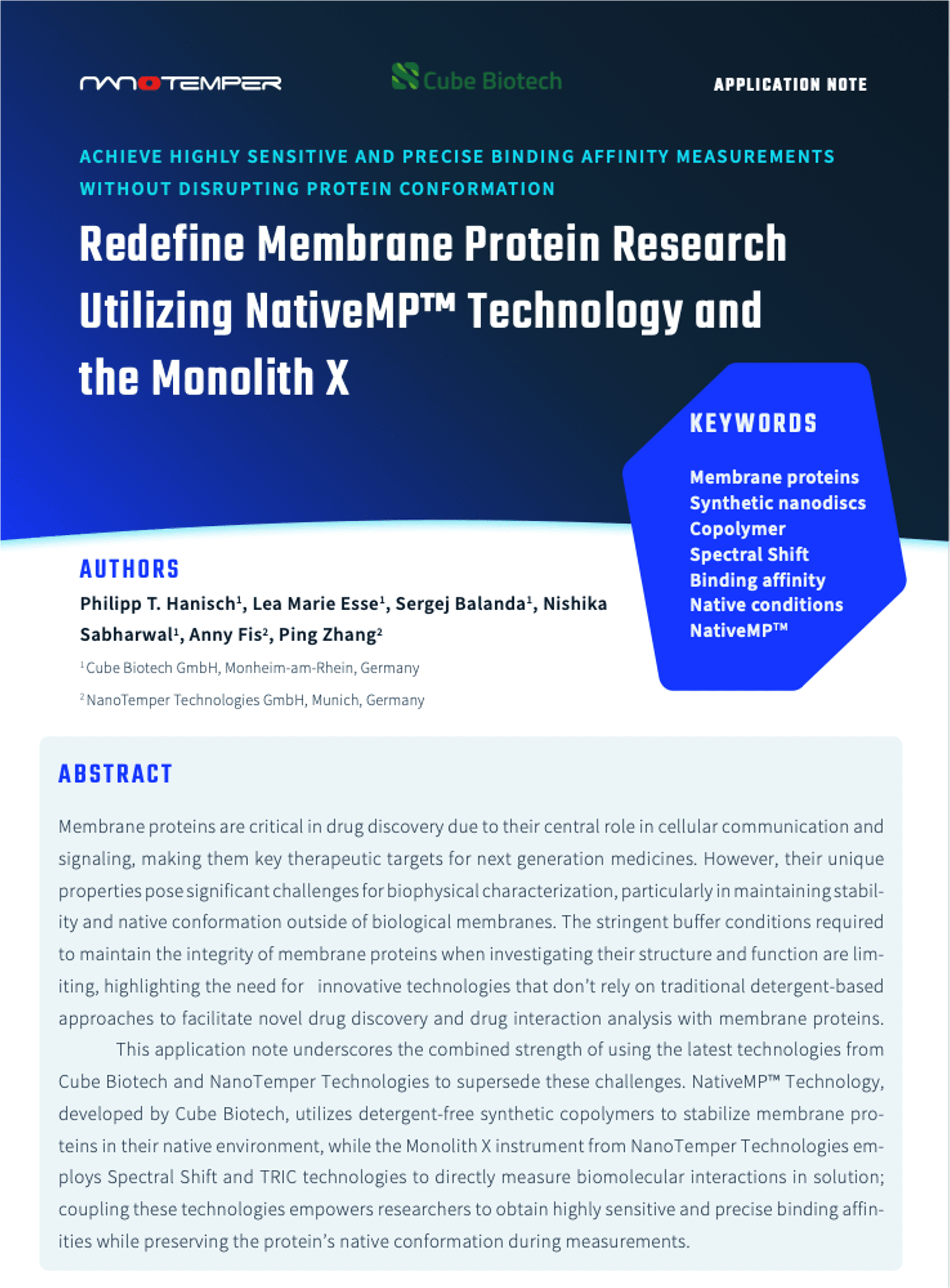Ascher D.B., Wielens J., Nero T.L., et al.
Scientific Reports 2014, vol: 4(1) doi: 10.1038/srep04765
Abstract
Hepatitis C virus (HCV) infection affects more than 170 million people. The high genetic variability of HCV and the rapid development of drug-resistant strains are driving the urgent search for new direct-acting antiviral agents. A new class of agents has recently been developed that are believed to target the HCV protein NS5A although precisely where they interact and how they affect function is unknown. Here we describe an in vitro assay based on microscale thermophoresis and demonstrate that two clinically relevant inhibitors bind tightly to NS5A domain 1 and inhibit RNA binding. Conversely, RNA binding inhibits compound binding. The compounds bind more weakly to known resistance mutants L31V and Y93H. The compounds do not affect NS5A dimerisation. We propose that current NS5A inhibitors act by favouring a dimeric structure of NS5A that does not bind RNA.
Topics: Virology, Monolith – MicroScale Thermophoresis, MST, Publications










